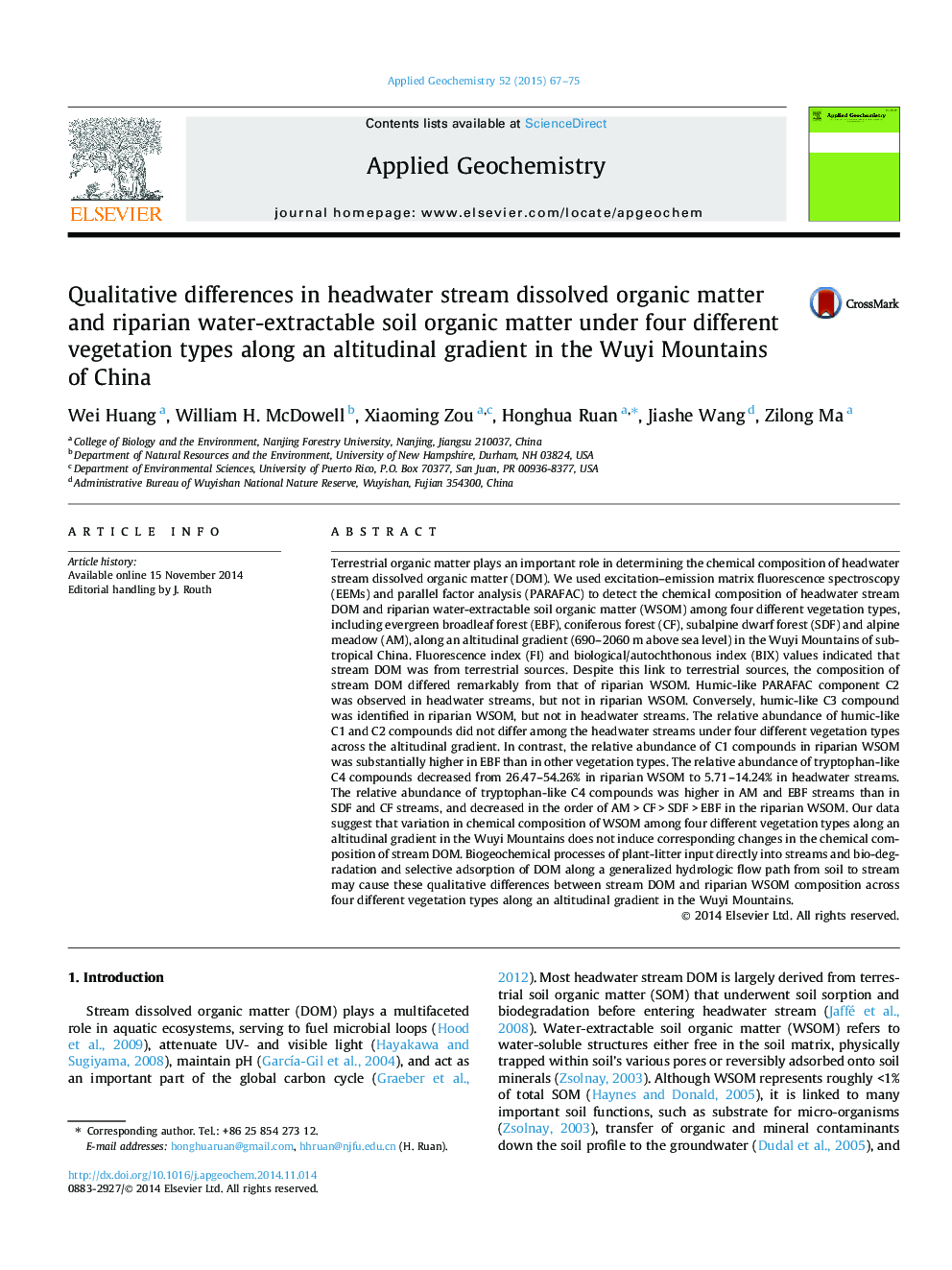| Article ID | Journal | Published Year | Pages | File Type |
|---|---|---|---|---|
| 4435716 | Applied Geochemistry | 2015 | 9 Pages |
•Stream DOM and riparian WSOM composition along an altitudinal gradient were studied.•Stream DOM was from terrestrial sources.•Composition of stream DOM differed remarkably from that of riparian WSOM.
Terrestrial organic matter plays an important role in determining the chemical composition of headwater stream dissolved organic matter (DOM). We used excitation–emission matrix fluorescence spectroscopy (EEMs) and parallel factor analysis (PARAFAC) to detect the chemical composition of headwater stream DOM and riparian water-extractable soil organic matter (WSOM) among four different vegetation types, including evergreen broadleaf forest (EBF), coniferous forest (CF), subalpine dwarf forest (SDF) and alpine meadow (AM), along an altitudinal gradient (690–2060 m above sea level) in the Wuyi Mountains of subtropical China. Fluorescence index (FI) and biological/autochthonous index (BIX) values indicated that stream DOM was from terrestrial sources. Despite this link to terrestrial sources, the composition of stream DOM differed remarkably from that of riparian WSOM. Humic-like PARAFAC component C2 was observed in headwater streams, but not in riparian WSOM. Conversely, humic-like C3 compound was identified in riparian WSOM, but not in headwater streams. The relative abundance of humic-like C1 and C2 compounds did not differ among the headwater streams under four different vegetation types across the altitudinal gradient. In contrast, the relative abundance of C1 compounds in riparian WSOM was substantially higher in EBF than in other vegetation types. The relative abundance of tryptophan-like C4 compounds decreased from 26.47–54.26% in riparian WSOM to 5.71–14.24% in headwater streams. The relative abundance of tryptophan-like C4 compounds was higher in AM and EBF streams than in SDF and CF streams, and decreased in the order of AM > CF > SDF > EBF in the riparian WSOM. Our data suggest that variation in chemical composition of WSOM among four different vegetation types along an altitudinal gradient in the Wuyi Mountains does not induce corresponding changes in the chemical composition of stream DOM. Biogeochemical processes of plant-litter input directly into streams and bio-degradation and selective adsorption of DOM along a generalized hydrologic flow path from soil to stream may cause these qualitative differences between stream DOM and riparian WSOM composition across four different vegetation types along an altitudinal gradient in the Wuyi Mountains.
